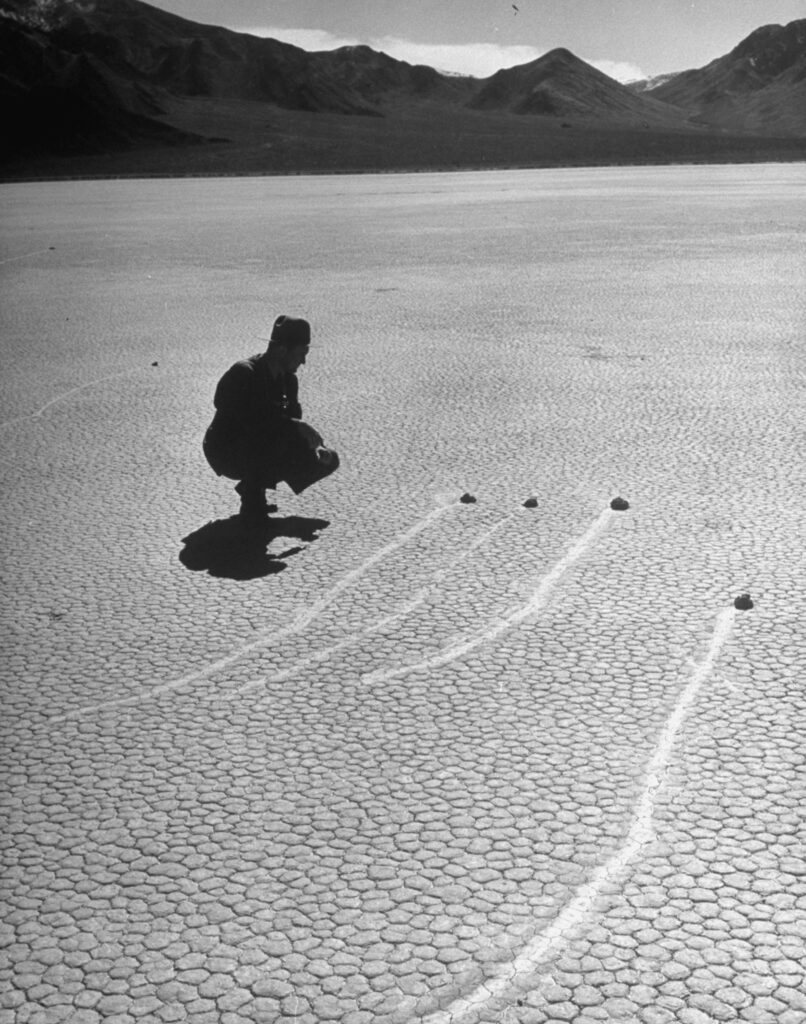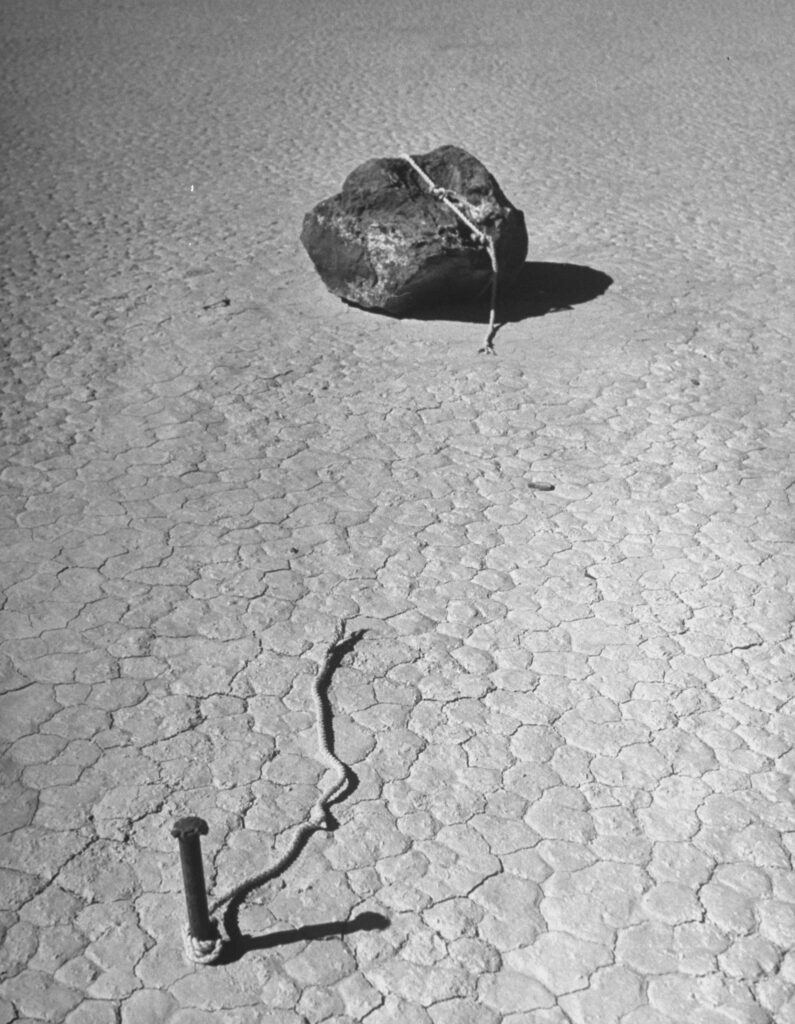In its March 10, 1952 issue LIFE magazine served its readers photos of the “sailing rocks” of the Racetrack Playa, a dry lake bed near Death Valley, California. The stones don’t do anything really wild like zip around in front of people, but they have moved at some point, and we know it by the tracks they have left behind at the Racetrack and also at a few similar locations around the globe. LIFE’s photos by Loomis Dean captured the phenomenon that keeps the Playa Racetrack a tourist destination all these years later.
Here was the setup offered in LIFE, in an article titled “The Case of the Skating Stones”:
On a dry lake bed high in the Panamint Mountains near Death Valley sit several dozen boulders whose peculiar behavior has long been a nightmare to geologists. The boulders, which weigh up to a quarter ton, stand at the ends of long, gouged-out paths which show that they periodically respond to unknown forces and skate about on the flat earthen floor.
LIFE painted the situation as a complete mystery, mentioning disproved theories from everyday folks that attributed the stones’ movement to the lake bed tilting back and forth, or perhaps to “Russians tampering with the magnetic pole.” (This was the early days of the Cold War, mind you). LIFE ended its writeup by saying “The mystery may never be completely solved. When humans observers are about, the stones refuse to budge an inch.”
But since 1952 scientists, when not busy exploring space and inventing cell phones and so forth, did come up with a leading hypothesis, which is that the stones’ skating is likely caused by the movement of thin sheets of ice that can form there in wintertime, with high winds perhaps helping to push stones along.
Though sometimes the stones have moved for reasons that are all too explicable—such as in 2013, when some stones were stolen. A park spokesman expressed both disappointment and confusion at the theft, saying “They don’t seem to understand that outside the Racetrack, these stones have no value.” Other visitors have damaged the site by taking the “Racetrack” name literally and driving their cars on it.
Sometimes human behavior is a mystery all its own.

The “sailing stones” of the Racetrack Playa in Death Valley, California, 1952.
Loomis Dean/Life Picture Collection/Shutterstock

The “sailing stones” of the Racetrack Playa in Death Valley, California, 1952.
Loomis Dean/Life Picture Collection/Shutterstock

LIFE’s 1952 story on the sailing stones of Racetrack Playa in Death Valley included this photo of stone-like objects described as “burro droppings” that had likely been moved by the same forces as the stones.
Loomis Dean/Life Picture Collection/Shutterstock

The sailing stones of the Racetrack Playa in Death Valley, California, 1952.
Loomis Dean/Life Picture Collection/Shutterstock

This three-quarter-ton stone left its mark after moving across a dry lake bed in Death Valley, 1952.
Loomis Dean/Life Picture Collection/Shutterstock

“Sailing stones” left tracks as they drifted across Racetrack Playa in Death Valley, California, 1952.
Loomis Dean/Life Picture Collection/Shutterstock

A small stone left these intricate tracks on the Racetrack Playa in Death Valley, California, 1952.
Loomis Dean/Life Picture Collection/Shutterstock

LIFE’s 1952 story on the Racetrack Playa described this photo as being from a “ghost experiment,” guessing that an amateur scientist had tied up the rock to keep it from moving, but over time the rope had eventually rotted away.
Loomis Dean/Life Picture Collection/Shutterstock
















